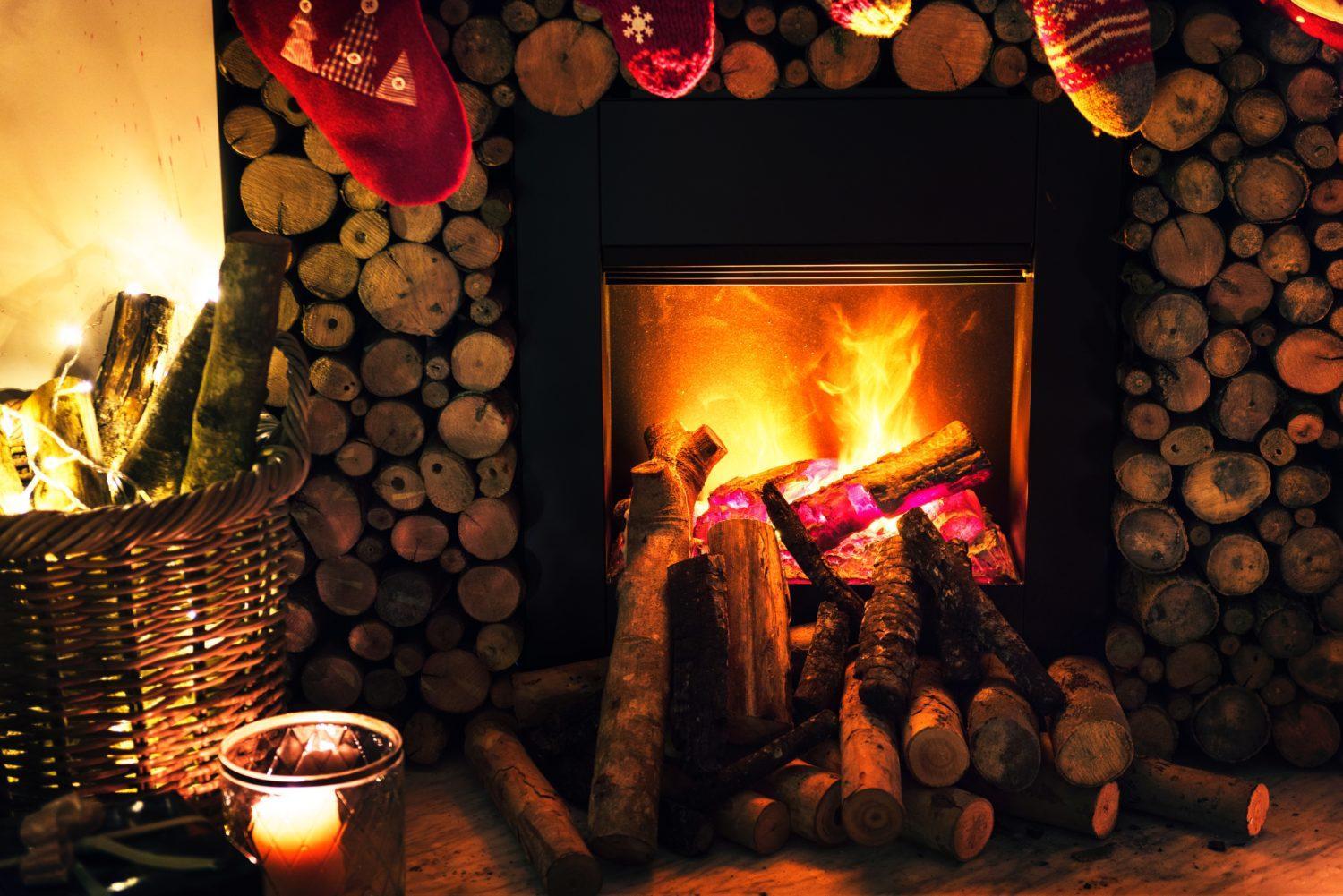
Photo by rawpixel
As cozy as they are, fireplaces typically remove more heat from a house than they contribute, sending up to eight percent of heat pump or furnace-warmed air up and out the chimney. But you don’t have to abandon your wood-burning ambiance–try these solutions that can improve the efficiency of your fireplace.
Check Damper
First, check your damper. The most common type of damper, a throat damper, is a metal plate at the top of your fireplace that seals off the flow of air from the outside when closed. It’s common to forget to close it after a fire, particularly since you need to wait until the fire is completely out to prevent a buildup of carbon monoxide and to let the ashes cool. Getting into the habit of remembering to close your damper whenever your fireplace is not in use is the first and easiest step to improving energy efficiency.
After years of exposure to heat, ashes, and moisture, many fireplace dampers will become stuck or warped. If you can visually see a gap, or feel a draft even when the damper is closed, your damper is not sealing well. A professional chimney cleaning and repair service can clean, oil, and if needed, replace your damper.
Chimney Top Damper
If your traditional throat damper needs to be replaced, consider a top-mount damper. This type of damper sits on top of the chimney, opening and closing with a steel cable that runs down the chimney and into the fireplace opening. Top sealing dampers are more energy efficient because they seal the chimney off at the top with an air-tight rubber gasket, preventing cold air, ice and snow from entering and creating a cold core in your chimney. As an added benefit, they also act as chimney caps, keeping debris and animals out, too.
Fireplace Doors and Covers
Even when a fireplace damper is in good repair and closed, the sealing is not complete. Installing glass doors to the front of the fireplace can significantly decrease air leaks. Adding magnetic covers to seal the vents of the fireplace doors will further reduce airflow. Magnetic fireplace blankets are another option and cover the entire front of the fireplace opening.
Chimney Balloon
If you are not ready to replace your damper, a chimney balloon is a less expensive option. It is an inflatable plastic balloon that seals your chimney like a throat damper. It can be used in almost any fireplace and is inflated and deflated by mouth or with a low pressure pump. As with dampers, the key is remembering to insert the balloon when not using your fireplace.
Fireplace Insert
If you want even more efficiency, a fireplace insert might be a good solution. It turns your fireplace into a wood burning stove. Choosing an insert involves functionality and aesthetics. A good place to start your research is with the EPA’s Burn Wise program which emphasizes “the importance of burning the right wood, the right way, in the right appliance.” The EPA also certifies wood stoves for particulate emissions.
Finally, if you suspect your fireplace has significant problems or you use your fireplace regularly, have it inspected by a certified chimney sweep from the Chimney Safety Institute of America.
This article was first published in the Daily Progress.
